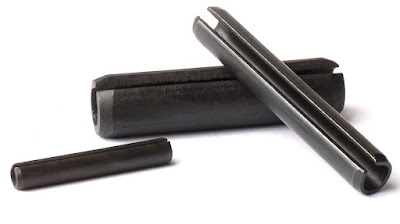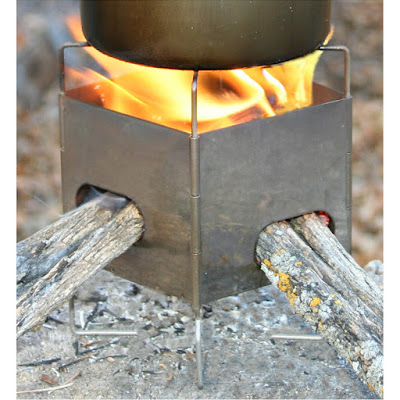This post is the first in a series on assembling
an AR-15 at home and on a budget.
Obligatory Disclaimer: Please check all relevant Federal,
State, and Local laws before embarking on this voyage. At the Federal level, it
is perfectly legal for non-prohibited
persons to manufacture firearms for personal use.
Putting an AR together from parts is something anyone with basic
mechanical aptitude, the ability to follow simple instructions, and few specialized
tools can do in an afternoon.
When getting started, a preliminary question should be “Should I buy a completed lower, or should I get an 80% lower and finish it myself?”
For those who are not familiar with them, 80% lowers (one source, another source) are complete firearm receivers except for the fire control pocket, which is left solid. This is the area where the
hammer, trigger, and associated pins and springs fit.
There are pros and cons for both options, of course. Here
are some of the main considerations
Completed Lowers:
- Usually slightly more
expensive
- Must be shipped to or purchased from an FFL
- Require filling out a 4473
- Ready to go without any modification
80% lowers:
- Generally less
expensive
- Can be shipped to a private residence
- Do not involve any Federal paperwork
- Require fairly precise machining
Completing an 80% lower can be accomplished with basic tools
such as a hand drill or cold chisels and files. But a much better and
more professional result will be achieved with a drill press or, preferably, a milling machine. While this process can be done freehand, the risk of error,
and therefore ruining the lower, is quite high, and this is where the cost savings for the 80% lower can evaporate quickly. A jig (one source, another source) to help guide
the cuts is highly recommended; however, the price of a quality jig will often
exceed the cost of a single 80% lower. Everyone needs to decide for themselves where the tradeoff of effort vs convenience falls on their personal cost/benefit scale.
What follows is the experience of a fellow gun owner who has
been through the process of converting an 80% lower to a complete lower. Remember: skills, tooling, and experience will vary.
*****************************
Hello, Different Gunnie here, to talk about my experiences doing 80% AR lowers and other incomplete firearm parts! But first, some information:
- Using power tools can be dangerous. Follow all safety instructions for the equipment you are operating!
- You need PPE (Personal Protective Equipment) designed to protect you from the hazards at hand. Safety glasses, particle masks and hearing protection should be available for the times you need them.
- YouTube can be your friend. My default source are manufacturers videos of the tools I'm using.
- YouTube can also be your enemy. When in doubt, DON'T. Instead, ask a friend with power tool experience for help.
Now for some other information: I Am Not A Lawyer and didn't stay in a Holiday Inn Express. Neither am I a firearm manufacturer, as defined by the U.S. Government.
It is not against the law to make a firearm FOR YOUR PERSONAL USE, but there are certain very explicit exceptions. Please see this link for more information. The important section from that site is copied here:
The Gun Control Act of 1968 (GCA)
mandated, among other things, that persons "engaged in the business" of
dealing in firearms must be licensed by the federal government. (18 U.S.C. § 921(a)(21)(C).) This development made it illegal for an unlicensed person to make a firearm for sale or distribution. (18 U.S.C. § 923.)
In addition, the law requires that firearms dealers must perform
background checks on prospective purchasers and maintain records of all
gun sales. (18 U.S.C § 922(t).)
However, nothing in the GCA prohibits individuals from making guns
for their own personal use. A non-licensed person may make a firearm,
provided it is not for sale and the maker is not otherwise prohibited
from possessing firearms (such as a convicted felon). (18 U.S.C., Chapter 44; § 922 (d).) Federal
law imposes none of the purchase restrictions on non-licensed
possessors that it does on those who need licenses, and as a result,
homemade guns need not be registered and the owner need not undergo a
background check.
All of this may be different and/or change, depending on your state of residence or a change in Federal regulations. In general, though if you are not prohibited from possessing a firearm, you can build one FOR YOURSELF. According to the Federal government, the AR-15 lower is what is meant by 'firearm', as that is the only part with a serial number. All other parts are a collection of steel and plastic.
Questions on this, please see the "I Am Not A Lawyer" section above and contact a real, certified expert at the site shown.
On To The Fun Stuff!
Tools
Jig
I have used two different jigs and the one I have now is from 5D Tactical and it is, in my opinion, very easy to use. This particular jig will allow you to machine a lower for any caliber you choose from 9mm, through 5.56 and similar length, to the assorted .308/7.62x51 length rounds. Both of these jigs I used required a router to make the process relatively quick and easy. I highly recommend watching the video on the liked 5D page for how all this works.
Router
I happen to already own a router, so I didn't need to go shopping. The choices are as varied as there are power tool companies, so as long as you are choosing a reputable manufacturer, I don't care what you choose as long as you can adapt the router bit/milling bit to your tool. There are complete instructions on the 5D pages.
Other Needed Items
You will need a
vise to hold things, mounted on a
workbench or attached to a 2x6 board that can be
clamped in a safe place to operate it. To control the aluminum particles produced and expelled at ~25,000 rpm, a
vacuum is nice but not required. A
hand drill can be used to make the holes through the sides if you are careful, but I used a friend's drill press.
The Actual Process
Again, I recommend watching
this video and also
this one, found on the 5D jig page for a good understanding of how this all works. My first try using the 5D jig took me about four hours to complete everything. Even with practice I'm not comfortable rushing the steps, and I seem to be at a bit under 3 hours to finish everything.
What Is The Cost?
That depends on whether you are buying everything from scratch or if you have access to some of the tools to start. If you were to buy everything, starting with a router, jig, cordless drill, vise, portable stand, vacuum, drill bits and screwdrivers, the cost could start at $700 and easily be $1,000, depending on what you like. As I had everything but the 80% lowers, jig and milling head, the cost wasn't terrible.
Lowers are available from many different places, and after a quick search can be found for as little as $60 to as much as $250 and above.
What Do You Get?
If you can follow directions, you can get something like this:
 |
| Before and After |
|
Bonus Content!
There are other firearms available to make at home, such as various pistols. I am doing a Not-A-Sig 320 from a kit bought from
JSD Supply. You can buy
the jig and
the part that makes it a 'firearm' from them. Here is a picture of what the parts look like.
 |
Top to Bottom: Jig box, unfinished control unit,
completed control unit, outer jig, inner jig | |
|
|
|
|
| |
|
|
|
This company also has very good support and the instructional video has easy to follow instructions. For this project I recommend a drill press, since several of the required drill bits are a very small diameter and the holes need to be precisely located.
Also available are several different frame and slide options, since the 'firearm' parts can be easily removed and placed into a different frames with the removal of a couple of pins.
I have
this combination which was purchased last year (out of stock now) and I just haven't quite finished it yet, There needs to be some trimming of several parts and polishing and smoothing of some spots where I didn't necessarily drill as smoothly as I could have. That's why you see an unfinished unit in the picture shown above, just in case I need to redo it.
 |
| Full Size Not-a-Sig 320 |
|
While JSD Supply has a good assortment to choose from, I also recommend going to the home page of
5D Tactical and looking over their 80% products too!
I hope my experiences answered more questions than were raised! Best of luck to you!
********************************
In future posts I (David) will discuss parts, tools, and the assembly
process of a complete AR-15 lower.
Good luck and safe shooting.









































